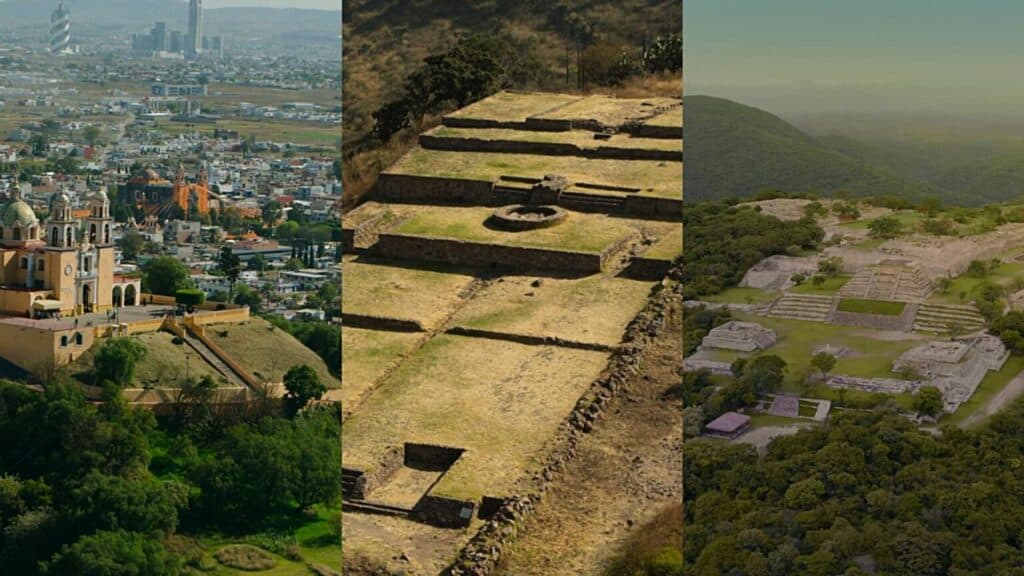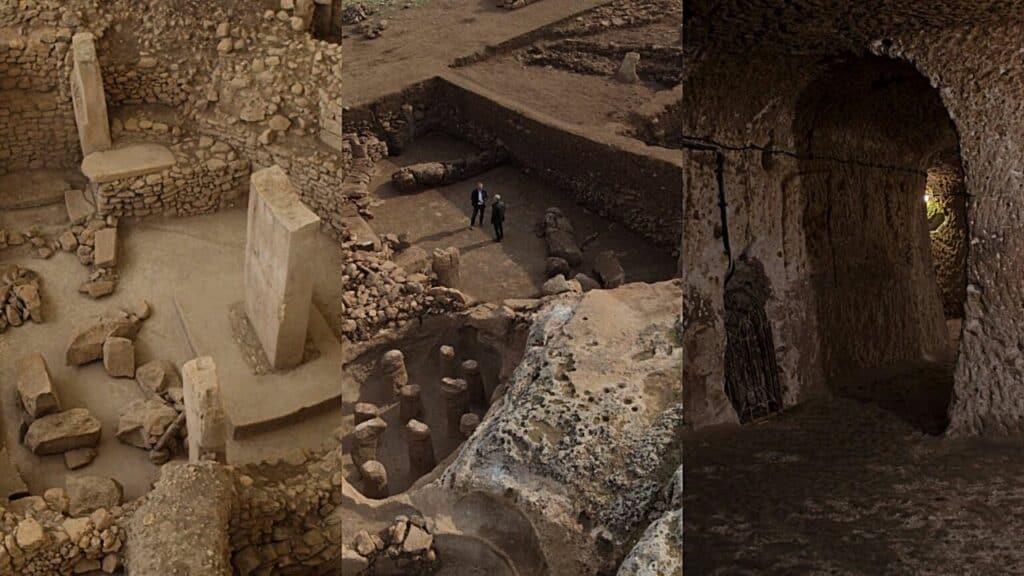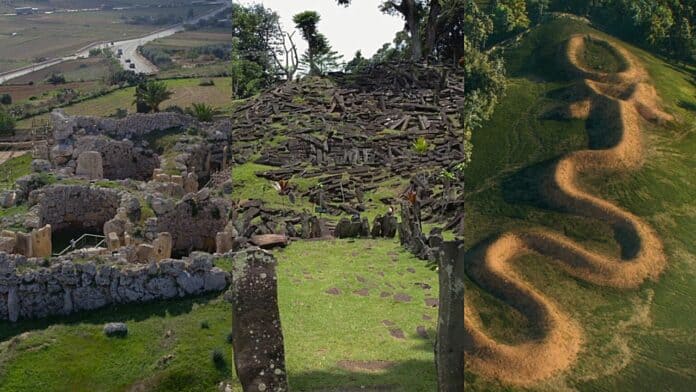In the brand new Netflix docuseries Ancient Apocalypse, Graham Hancock talks about a number of locations that hint at an advanced civilization that might’ve been erased from history during the ice age.
From Indonesia to Turkey, Graham Hancock went on to examine pyramids that were long ignored by the people and cities buried deep under the surface.
By connecting all the dots, he tried to sum up that an advanced civilization was at work before the ice age.
Here is a look at all the locations Graham Hancock visited in order to prove his theories.
Indonesia: Gunung Padang
Located on the island of Java, near the village of Karyamukti, Gunung Padang is a megalithic site built on earth and stone at the top of an extinct volcano. The site is filled with oddly hexagonal stone slabs strewn everywhere.
A closer look at these rocks suggests that they were cut and repurposed as building materials.
Geologist Danny Hilman Natawidjaja’s investigation further proposed that the place is much more than a hill; it is more of a step-pyramid, which was probably built by an advanced civilization 24,000 years ago.
Mexico: Great Pyramid of Cholula, Texcotzingo, Xochicalco
The Great Pyramid of Cholula stands at a height of 146.6 meters in the Puebla region’s city of Cholula. The pyramid was neglected for centuries, as people saw it as just another hill.
Evidence suggests that the Great Pyramid of Cholula is dedicated to the ancient god of rain and floods, Tlaloc.
The pyramid isn’t as tall as Egypt’s Great Pyramid of Giza, but it was once larger, measuring 400 by 400 meters at its base, making it the largest monument ever constructed by any civilization.

About a two-hour drive to the northwest from the city of Cholula is Texcotzingo, which is claimed to be one of the first extant botanical gardens.
The Aztecs built a remarkable network of garden terraces and pools over here, fed by cleverly constructed aqueducts that carried water down from reservoirs at the mountain’s top.
A few hours to the south of Mexico City is Xochicalco, which is also built by a civilization humans don’t know much about. There are two pyramids over here, one dedicated to Tlaloc and the other to Mexico’s civilizing hero, Quetzalcoatl.
Malta: Ggantija, Ghar Dalam, Mnajdra
Ggantija is a giant megalithic structure located on the Mediterranean island of Gozo. Considered to be 5600 years old, Ggantija is the world’s second-oldest existing man-made religious structure.
Near the southeast coast of the main island of Malta is Ghar Dalam, a 144-meter-long phreatic tube and cave. Ghar Dalam is no less than a time machine, as it offers a glimpse into Malta’s prehistory.
A series of floods over here have left behind animal bones and fossils dating back thousands of years.
Mnajdra, on the other hand, is located on the southern coast of the Mediterranean island of Malta and was built around the fourth millennium BCE.
Bahamas: Bimini Road
The Bimini Road is an underwater rock formation near North Bimini Island. A group of divers first discovered the formation in 1968 while looking for the lost city of Atlantis.
The hook-shaped formation runs roughly from northeast to southwest, about 1,600 feet long. Evidence of whether this was a road to other ancient advanced civilizations is still missing.
Turkey: Göbekli Tepe, Karahan Tepe, Derinkuyu
Located in the Southeastern Anatolia Region of Turkey, Göbekli Tepe is a Neolithic archaeological site that dates back to around 11,600 years ago, making it the oldest acknowledged monumental structure on the earth.
It was built at a time when the Earth was just emerging from the last ice age. Many of the pillars at the site give insights into the particular iconography of the period.

About an hour’s drive from Göbekli Tepe is Karahan Tepe, where 250 obelisks featuring animal figures were uncovered.
There are a number of similarities between these sites, but what’s quickly noticeable is the fact that Karahan Tepe has one edge carved out of the bedrock.
Another fascinating location Hancock visited in Turkey is Derinkuyu, located in Cappadocia. Derinkuyu is known for its large underground city, which consists of a series of stone tunnels and chambers plunging as deep as 85 meters below the surface.
United States of America: Poverty Point, Serpent Mound
Located in northeastern Louisiana, Poverty Point comprises of visible earthen mounds and ridges built by indigenous people between 1700 and 1100 BCE. The largest and most noticeable mound is Mound A, which is 72 feet tall.
When it comes to mounds, the most spectacular example is Serpent Mound, a prehistoric effigy mound that is 1,348 feet long and is located in Peebles, Ohio.
Also Read: Ancient Apocalypse review: Compelling but overtly dramatic

